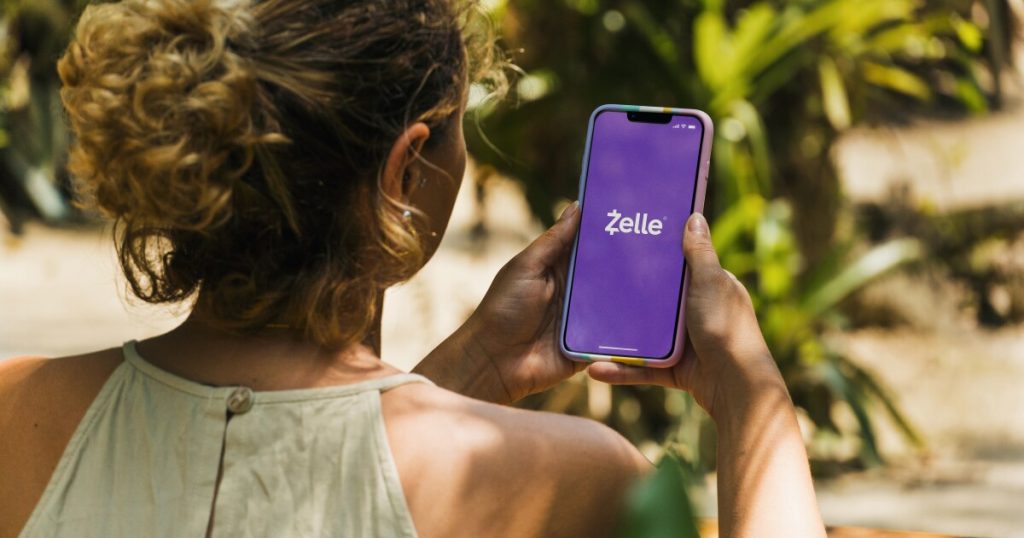By some measures, Zelle is a less popular target for scammers and fraudsters than other peer-to-peer, or P2P, payment platforms in the U.S., according to a variety of data sources. By others, it is a major offender — in line with its overall high usage.
Zelle has faced
JPMorgan Chase, one of the owners of Early Warning Services, has said it would
Zelle is one of the four large P2P services that dominate the U.S. market, according to
The 2022 survey also found 40% of P2P users use Cash App and 39% use Zelle. Popularity of individual apps dropped off steeply from there; 19% used Apple Cash, and 10% used Google Pay (which Google
Here’s what the data says about how Zelle compares to other P2P transfer platforms in terms of fraud and scams:
Self reporting offers incomplete picture
P2P payment platforms in the U.S. are not required to publicly report scam or fraud data in a standardized manner, so few do. This makes directly comparing fraud and scam rates on various apps difficult.
Early Warning Services
A spokesperson for Early Warning Services provided American Banker a more specific figure: More than 99.95% of completed Zelle transactions in 2023 involved no reports of fraud or scams, correlating to up to 0.05% that did.
The spokesperson said that was a 50% decrease in reports of fraud and scams processed on the Zelle Network from 2022 to 2023 — down from 0.1% — even as network transaction volume increased by 28%.
The closest comparisons for this 0.05% benchmark are 2018 figures from Venmo.
PayPal had been shooting for a rate of roughly 0.24% during those periods, and a company spokesperson told the Journal that Venmo’s loss levels for the entire first quarter were less than 0.35% and had declined by November.
PayPal did not provide specific fraud and scam rate figures in response to American Banker’s request, nor did Square, which owns Cash App, and nor did Google. Apple did not respond to a request.
J.D. Power survey results: Zelle safer than competition
A
“Just 3% of Zelle customers in our study reported losing money to a scammer, compared with 5% across all P2P transfer brands, on average,”
The survey also found that 5% of Zelle users sent money to the wrong person versus 7% on average among all brands. One percent of Zelle users reported an unauthorized transfer from their account, versus 5% on average among all brands. And overall, 8% of Zelle customers in the study said they experienced some form of fraud, compared with 13% across the P2P transfers industry.
Besides Zelle, J.D. Power’s survey also included data from users of Apple Cash, Cash App, Google Pay, PayPal and Venmo.
Although the J.D. Power survey yielded a huge number of responses compared to typical surveys, the data might still be affected by the same statistical problems that most surveys face, which are exacerbated when small percentages are involved. For example, some consumers might report not using an app if the name is unfamiliar, even if they had actually used it once or twice.
Despite these shortcomings, the J.D. Power survey results strongly suggest Zelle is no worse than average among P2P apps in terms of how many users report experiences with fraud and scams.
FTC data: Zelle a top three platform for scams
Though not directly comparable due to differences in year and methodology, this placement corresponds roughly to its popularity among U.S. consumers, according to the 2022 Consumer Reports survey.
The FTC found that 20% of people who reported paying a scammer with a payment app or payment service named Zelle in their report. By comparison, 28% mentioned PayPal, 24% mentioned Cash App, 9% mentioned Venmo and 7% mentioned Apple Pay — although Apple Cash is the actual name of the Apple offering that supports P2P payments.
The FTC did not include Zelle payments that consumers reported as bank transfers in these statistics. It’s unclear how large an effect this accounting choice had; consumers might be more likely to report Zelle payments as bank transfers compared to other P2P transfers because these Zelle transfers are often made directly through the consumer’s banking app.
